Examples of Using a Dichotomous Key
The Complete Guide to Dichotomous Keys (With Examples)
Accurately identify any object and organism

Classification and identification are very important in any scientific field – especially biology. Therefore, scientists have created a simple yet effective system to identify and group organisms in the right categories. This tool is known as a dichotomous key.
What is a Dichotomous Key?
A dichotomous key is a visual tool that allows users to determine and identify different creatures in the natural world like mammals, trees, reptiles, fish, rocks, and wildflowers. Dichotomous keys identify objects and organisms.
They are typically used for identifying plants and animal species on the basis of their characteristics. Moreover, they can also be used to identify minerals and any other object with observable traits.
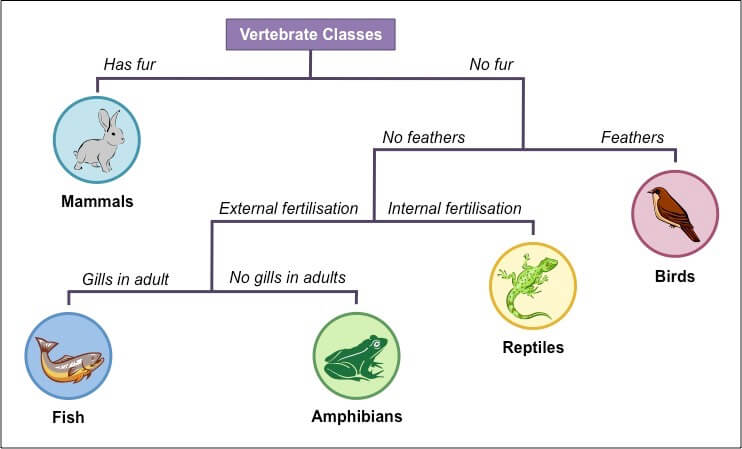
Image Source: ib.bioninja.com.au
• Uses of Dichotomous Keys
A dichotomous key is used in the field of biology and other sciences. As new species are discovered every day, it's important to have a technique to identify and classify them easily. So, the dichotomous key is the perfect tool for this.
Some common uses of the dichotomous key are:
- To identify and categories organisms.
- To help students easily understand complex scientific concepts.
- To simplify and organize large amounts of information for identification.
Types of Dichotomous Keys
"Dichotomous" means "divided into two." Hence, according to the dichotomous key definition, it always presents two choices in each step. The option you select in each step gives rise to new choices in the next step.
All dichotomous keys function in the same way, but there are several different ways of presenting them. Therefore, there are different types of dichotomous keys:
1. Nested Style
In a nested dichotomous key, the next question in a series is presented "nested" under the answer that leads to that question. Indentations are used to distinguish between the questions.
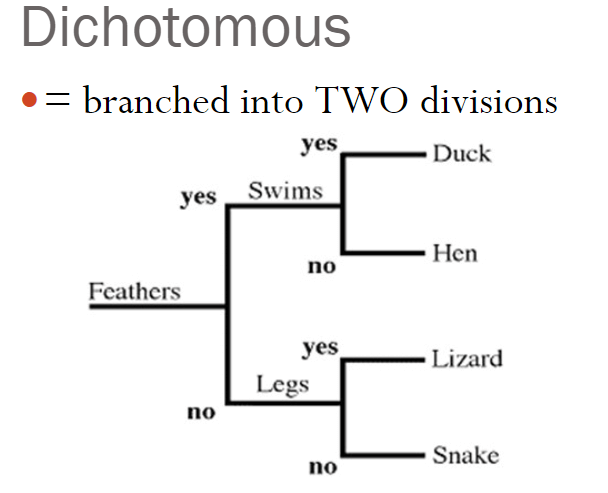
Image Source: slideplayer.com
2. Linked style
In the linked style of the dichotomous key, the questions are laid out in the form of a list. Each answer directs you to the next question, and the user has to find the correct item to identify the object or the organism correctly.
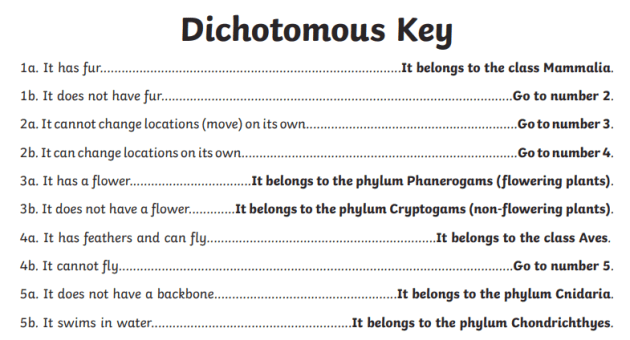
Image Source: www.twinkl.it
3. Branching Tree
In a branching tree layout of a dichotomous key, the characteristics of each organism are laid out like a flowchart.
Each characteristic or question gives birth to a new branch and carries a subsequent question as a sub-branch. The identification is revealed at the end of each branch.
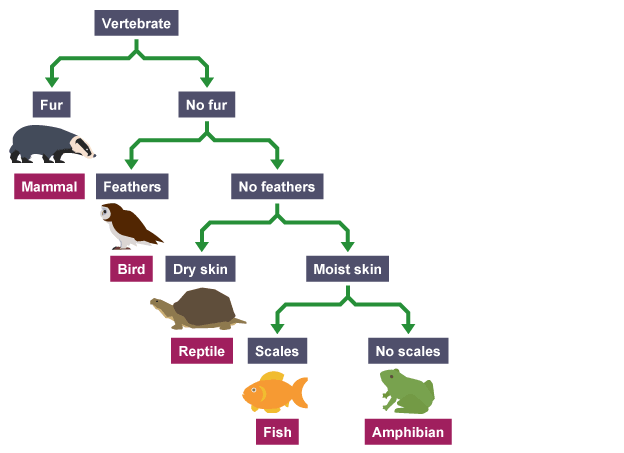
Image Source: evolvingsciences.com
4. Computer Program
Dichotomous keys are now being converted into computer program forms thanks to the global digitization. This allows users to answer questions one at a time to get the correct follow-up question automatically.
It is similar to an online quiz where the user reaches the correct identification after answering all the questions.
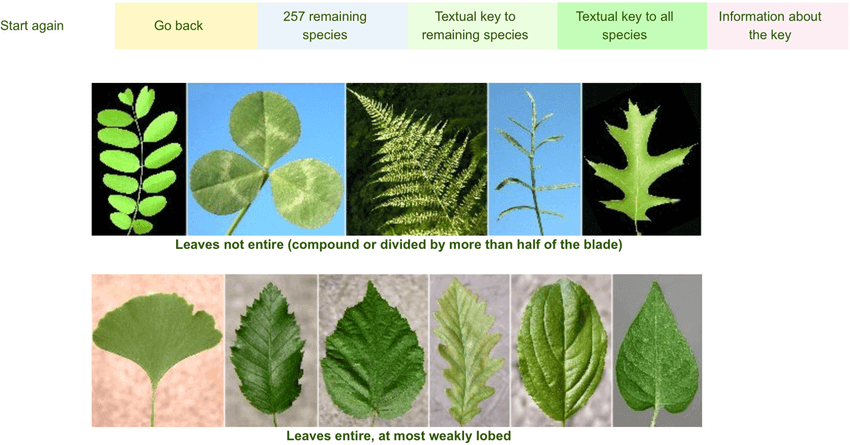
Image Source: researchgate.net
Learn more about Phylogenetic Tree and Cladogram.
How to Make a Dichotomous Key?
To create a dichotomous key, both qualitative and quantitative factors are considered. It can be done in visual form (flowchart) or a written format (quiz).
Here is a step-by-step guide to help you create a dichotomous key:
Step 1: List the Characteristic
Attention to the organism you are trying to identify with your dichotomous. Note down all the visible characteristics. For example, if you are trying to identify a group of plants, you may notice that some have large flowers, whereas others have tiny leaves.
Step 2: Organize the Characteristics
To create an effective dichotomous key, organize the characteristics. Start with the most common features first and then move to more specific ones. This process will help you identify the more obvious and less obvious contrasting characteristics of different species.
Step 3: Divide the Organisms
Create categories and divide your organisms into groups based on similarities in characteristics. For example, animals can be divided into those with feathers and without feathers. You can further subdivide your specimen by asking more questions and tell each organism is identified.
Step 4: Draw Dichotomous Key Diagram
Either you can create a text-based dichotomous key for a visual one. The graphic dichotomous key can also use images of the organisms you are trying to identify. Here you can choose between different types of dichotomous keys like branch tree or nested.
Step 5: Test Your Dichotomous Key
Once your dichotomous key is ready to test it out to check if it works. Focus on the organism you are trying to identify and answer each question in your dichotomous diagram. If the questions need rearrangement, then make necessary adjustments until you are satisfied.
Recommended Dichotomous Key Makers
Dichotomous keys make it simple and easy to identify biological organisms and other objects. However, creating a dichotomous key by hand can be a tedious and time-consuming task. This is why we recommend using a dichotomous key maker that is easy to learn and use for both beginners and professionals.
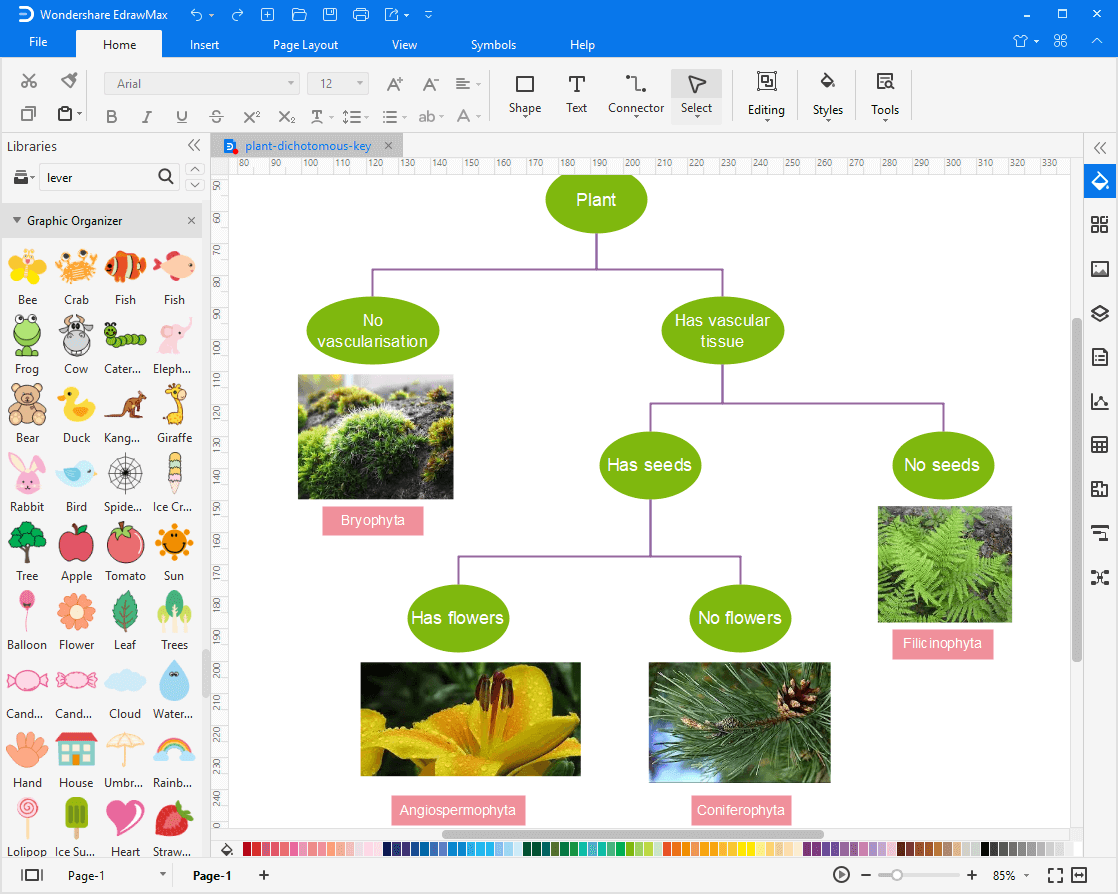
EdrawMax helps you create professional-looking diagrams of all types. You can effortlessly use the software to visualize dichotomous keys using its advanced drawing features:
- It gives you smart shapes and connectors.
- Offers an extensive symbol library.
- Has multiple styling options.
- You get hundreds of inbuilt templates.
- The intuitive drag and drop interface allows you to draw with precession and control.
Use EdrawMax on across different platforms and create anything you want!
EdrawMax
All-in-One Diagram Software
Create more than 280 types of diagrams effortlessly
Start diagramming with various templates and symbols easily
- Superior file compatibility: Import and export drawings to various file formats, such as Visio
- Cross-platform supported (Windows, Mac, Linux, Web)
Examples of Using a Dichotomous Key
Source: https://www.edrawsoft.com/complete-guide-to-dichotomous-keys.html
0 Response to "Examples of Using a Dichotomous Key"
Post a Comment